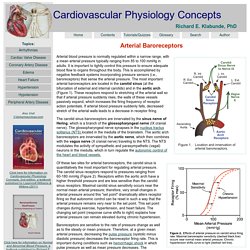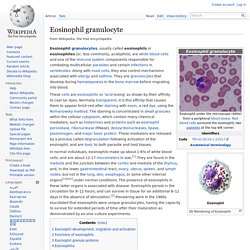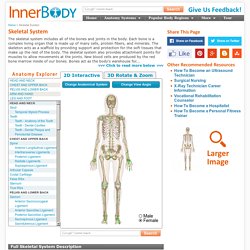

List of medical roots, suffixes and prefixes. This is a list of roots, suffixes, and prefixes used in medical terminology, their meanings, and their etymology.

Most of them are combining forms in New Latin and hence international scientific vocabulary. There are a few general rules about how they combine. First, prefixes and suffixes, most of which are derived from ancient Greek or classical Latin, have a droppable -o-. As a general rule, this -o- almost always acts as a joint-stem to connect two consonantal roots, e.g. arthr- + -o- + logy = arthrology. But generally, the -o- is dropped when connecting to a vowel-stem; e.g. arthr- + itis = arthritis, instead of *arthr-o-itis. Prefixes and suffixes[edit] The following is an alphabetical list of medical prefixes and suffixes, along with their meanings, origin, and English examples. A[edit] B[edit] C[edit] D[edit] Anterior cruciate ligament. The anterior cruciate ligament (ACL) is one of a pair of cruciate ligaments (the other being the posterior cruciate ligament) in the human knee.

They are also called cruciform ligaments as they are arranged in a crossed formation. In the quadruped stifle joint (analogous to the knee), based on its anatomical position, it is also referred to as the cranial cruciate ligament.[1] The anterior cruciate ligament is one of the four main ligaments of the knee, and the ACL provides 85% of the restraining force to anterior tibial displacement at 30 degrees and 90 degrees of knee flexion. [2] Structure[edit] CV Physiology: Arterial Baroreceptors. Arterial blood pressure is normally regulated within a narrow range, with a mean arterial pressure typically ranging from 85 to 100 mmHg in adults.

It is important to tightly control this pressure to ensure adequate blood flow to organs throughout the body. This is accomplished by negative feedback systems incorporating pressure sensors (i.e., baroreceptors) that sense the arterial pressure. The most important arterial baroreceptors are located in the carotid sinus (at the bifurcation of external and internal carotids) and in the aortic arch (Figure 1). These receptors respond to stretching of the arterial wall so that if arterial pressure suddenly rises, the walls of these vessels passively expand, which increases the firing frequency of receptor action potentials. If arterial blood pressure suddenly falls, decreased stretch of the arterial walls leads to a decrease in receptor firing. It is important to note that baroreceptors adapt to sustained changes in arterial pressure.
Eosinophil granulocyte. 3D Rendering of Eosinophil Eosinophil granulocytes, usually called eosinophils or eosinophiles (or, less commonly, acidophils), are white blood cells and one of the immune system components responsible for combating multicellular parasites and certain infections in vertebrates.

Along with mast cells, they also control mechanisms associated with allergy and asthma. They are granulocytes that develop during hematopoiesis in the bone marrow before migrating into blood. Eosinophil development, migration and activation[edit] Functions of eosinophils[edit] Following activation, eosinophils effector functions include production of: In addition, there are also eosinophils that play a role in fighting viral infections, which is evident from the abundance of RNases they contain within their granules, and in fibrin removal during inflammation. Eosinophil granule proteins[edit] Eosinophilia[edit] Main article: Eosinophilia Treatment[edit] corticosteroids- promote apoptosis.
Additional images[edit] Explore the Brain. Advertisement.

EnchantedLearning.com is a user-supported site. As a bonus, site members have access to a banner-ad-free version of the site, with print-friendly pages.Click here to learn more. (Already a member? Click here.) THE FUNCTIONS OF THE BRAIN The human brain is a complex organ that allows us to think, move, feel, see, hear, taste, and smell. The brain produces electrical signals, which, together with chemical reactions, let the parts of the body communicate. The average human brain weighs about 3 pounds (1300-1400 g).
At birth, the human brain weighs less than a pound (0.78-0.88 pounds or 350-400 g). The brain consists of gray matter (40%) and white matter (60%) contained within the skull. The Visible Body Blog. Human Body: Explore the Human Anatomy in 3D. Skeletal System – Labeled Diagrams of the Human Skeleton. [Continued from above] . . . calcium, iron, and energy in the form of fat.

Finally, the skeleton grows throughout childhood and provides a framework for the rest of the body to grow along with it. The skeletal system in an adult body is made up of 206 individual bones. These bones are arranged into two major divisions: the axial skeleton and the appendicular skeleton. The axial skeleton runs along the body’s midline axis and is made up of 80 bones in the following regions: SkullHyoidAuditory ossiclesRibsSternumVertebral column The appendicular skeleton is made up of 126 bones in the folowing regions: Upper limbsLower limbsPelvic girdlePectoral (shoulder) girdle SkullThe skull is composed of 22 bones that are fused together except for the mandible.